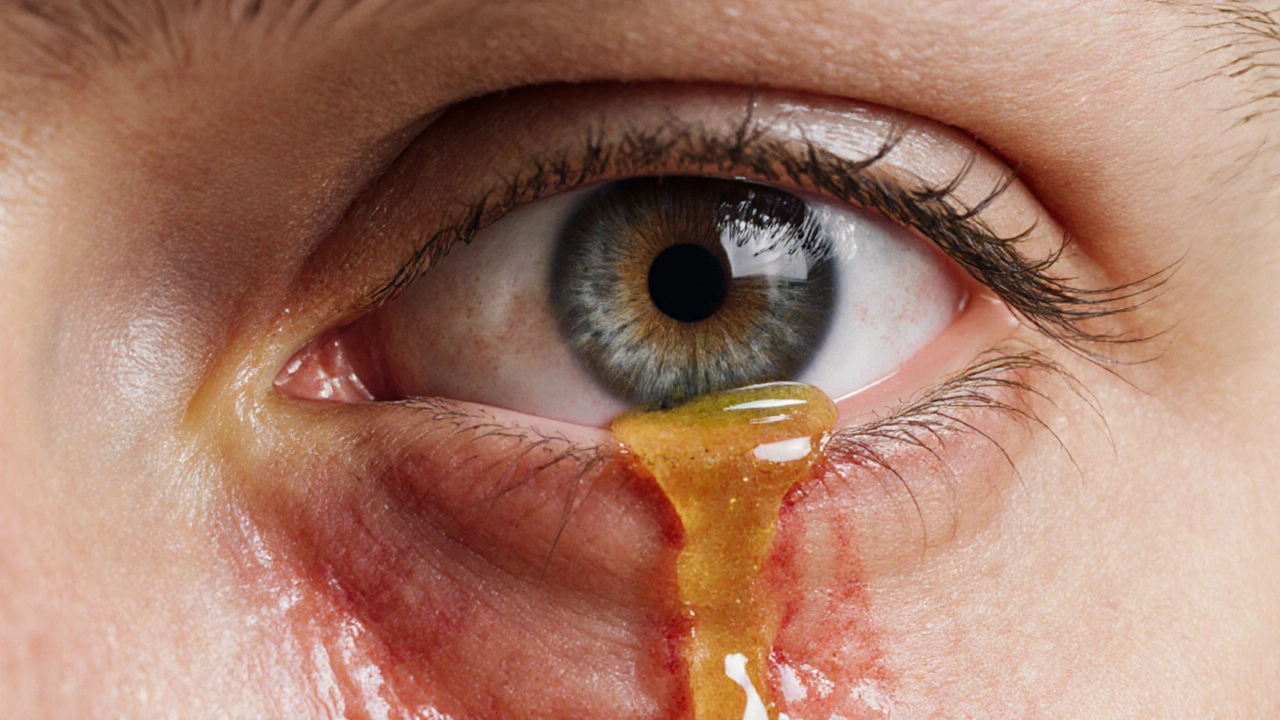Conjunctivitis – Symptoms, Causes, and Treatment Options
When dealing with conjunctivitis, an inflammation of the eye’s outer membrane that causes redness, itching, and discharge. Also known as pink eye, it can affect anyone from toddlers to adults. The condition comes in several forms: bacterial conjunctivitis, triggered by bacteria such as Staphylococcus aureus or Haemophilus influenzae, viral conjunctivitis, often linked to adenovirus and spreads easily in crowded places, and allergic conjunctivitis, a reaction to pollen, pet dander, or other allergens. Understanding these subtypes helps you pick the right treatment.
The root causes differ, but the eye’s response looks similar: watery or mucoid discharge, crusty lids, and a gritty feeling. Bacterial cases usually produce a thicker, yellow‑green pus and may follow a minor scratch or contact‑lens wear. Viral infections spread through hand‑to‑eye contact, sharing towels, or respiratory droplets; they often start in one eye and jump to the other. Allergic episodes flare up with outdoor pollen spikes or indoor irritants like dust mites, and they’re accompanied by intense itching and tearing. If you spot symptoms early, prompt action can cut the discomfort of conjunctivitis. For bacterial forms, antibiotic eye drops or ointments such as ciprofloxacin or gentamicin clear the infection in a few days. Viral types generally run their course in one to two weeks; lubricating drops and cold compresses soothe irritation, while rare severe cases may need antiviral eye drops. Allergic conjunctivitis responds best to antihistamine or mast‑cell‑stabilizer drops, and oral antihistamines can help when the eyes are part of a broader allergy attack. Good hygiene—regular hand washing, avoiding eye rubbing, and cleaning contact lenses properly—reduces the chance of spreading any type.
Prevention and When to Seek Help
Keep the eyes safe by tossing old makeup, not sharing towels, and using protective eyewear in dusty or windy environments. Children with conjunctivitis should stay home from school until symptoms improve to limit outbreaks. If you notice pain, vision changes, a foreign‑body sensation that doesn’t fade, or symptoms lasting more than a week, it’s time to see a doctor. An eye professional can confirm the exact subtype, prescribe the right medication, and rule out more serious conditions like keratitis. Below, you’ll find a curated list of articles that dive deeper into specific drugs, treatment comparisons, and practical tips for managing eye‑related issues, giving you a toolbox to handle conjunctivitis and related eye health questions confidently.

Seasonal Effects on Bacterial Eye Infections: What You Need to Know
Learn how seasonal changes affect bacterial eye infections, recognize symptoms, and get practical prevention tips for each time of year.
Categories
- Health and Medicine (40)
- Medications (40)
- Health and Wellness (34)
- Online Pharmacy Guides (15)
- Nutrition and Supplements (7)
- Parenting and Family (3)
- Environment and Conservation (2)
- healthcare (1)
- prescription savings (1)



